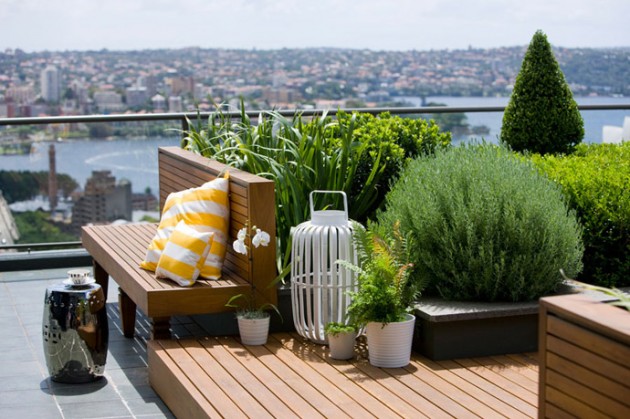“Driving into the city, you can’t help but notice the rooftop gardens. They’re everywhere,” says Thomas Lewis, an urban garden designer and owner of Floral Studio. “They’re everywhere. “ Add to that a steadily increasing number of interior green spaces – Lewis cites the Bank of America lobby on 42nd Street as a great example – and it’s easy to see that the enthusiasm for green spaces will have an impact on New York City’s commercial developers and builders.
The Benefits of Green Spaces in the Urban Environment
Green spaces have their fans, and with good reason. Research has revealed that regular exposure to plants lowers stress levels, boosts creative thinking and problem solving abilities, and may buffer interpersonal hostility. Additionally, plants play a vital role in cleaning the interior air and can lower building operating costs. Done strategically, interior and rooftop green spaces can help a building achieve LEED Certification.
Construction Considerations for the Rooftop Garden
“Rooftop gardens are becoming an almost expected feature for the residential building,” Lewis says. “Especially when we’re talking about higher end properties.” The primary logistical consideration in adding a rooftop garden to any building is the support of the additional weight. “If you have an older building, this means retrofitting the existing structure, whereas in new construction, these needs can be addressed in the original design.”
The weight of a rooftop garden is determined in large part by the choices made by the urban garden designer. The choice of decking or paving materials, as well as the size and number of trees and other weighty features, can have a profound impact on overall roof weight. A close collaboration between the architect or design firm and the urban garden professional is the best way to achieve green space goals while exercising reasonable cost controls.
Construction Considerations for the Interior Green Space
Plants require light, water, and a certain degree of maintenance in order to thrive. Whether the interior green space is located in the building’s lobby – the most common option – or in another designated area within the structure, there are certain operational parameters that must be met in order to ensure that feature is successful. Plants require light, water, and a certain degree of maintenance in order to thrive.
Plan on supplementing any natural lighting available to your interior green spaces. The ambient light provided by most fixtures in unison with any available natural lighting is not sufficient to keep plants healthy. “Think about how you’d feel if you spent all of your time in corporate lighting,” Lewis advises. “It’s not the healthiest thing for you, and it’s not the healthiest thing for your plants.” That being said, there’s also something to be said for selecting plantings that thrive in relatively low-light conditions, such as ferns and pothos.
According to Lewis, ensuring proper humidity is another key to a vibrant, attractive interior green feature. “Again, you’ll need the structure in place to support the water tanks for your plants. It’s essential that this system be kept clear of sediment and obstructions. Bear in mind that sunshine, such as you’ll get through lobby windows, can cause water to evaporate more rapidly. Making sure that there’s sufficient water in the feature is the primary maintenance task, along with periodic treatments to make sure no insect populations become established.
Looking Forward: What’s Next in High End Amenities?
What comes after the rooftop garden and interior green space? “Building owners are always going to be in the position of needing to offer more in order to attract the clientele they’re seeking,” Lewis said. “So what’s next on the horizon? I’d say swimming pools. We’re already starting to see a few of these installations, and before long, everyone’s going to want one.”
Going green is only one part of building New York’s best possible tomorrow, today. We’d love to hear your thoughts on what’s around the corner for commercial developers and builders! Let us know on Twitter (@TalisenCorp) and connect with us via Email or LinkedIn.
